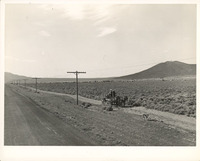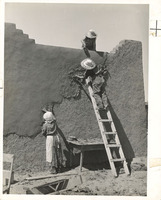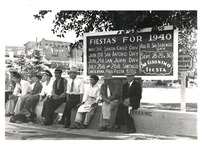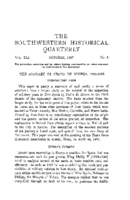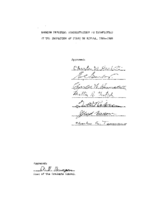Search Results
Displaying results 1 - 8 of 8
The Journey of Pedro de Rivera, 1724-1728
Description
Article published in the Southwestern Historical Quarterly. This paper is partly a summary of and partly a series of selections from a longer study on the subject of the inspection of military posts in New Spain by Pedro de Rivera in the third decade of the eighteenth century. The facts selected from the longer study, for the main parts of this paper, relate to his travels in Texas and in three other provinces of New Spain which were nearest to Texas: namely, New Mexico, Coahuila, and Nuevo Leon. Preceding these facts in an introductory explanation of the origin and the general nature of his entire journey of inspection. The explanation is derived from official papers written in Madrid and the City of Mexico. The description of the selected portions of his journey is based upon, and quoted from, his own diary of that event. This paper was read at the meeting of the Texas State Historical Association in Austin, Texas, on April 24, 1937.
Spanish Presidial Administration as Exemplified by the Inspection of Pedro de Rivera, 1724-1728
Description
Retta Murphy's unpublished doctorial dissertation signed by advisors for the University of Texas. Leaves iii-iv:
"The presidio, the mission, and the town were characteristic features of Spanish imperial expansion in America. In the accumulation and preservation of official records, and consequently in the presentation of facts to historical investigators, the presidio was far less notable than either the mission or the civil settlement. In the study of the history of colonial Spanish America a great deal of interest and emphasis has centered upon the sites, the foundings, the efforts, and the significances of numerous missions, as well as upon the development or decline of some towns. Military institutions have received less emphasis, except in the narratives of campaigns and conquests. Increasing investigation of presidial affairs, however, is according a finer balance to the whole study of the Spanish American colonies. In the eighteenth century the Spanish colonial empire was usually more active in the work of maintenance than in that of expansion, and New Spain was the most important part of that empire. The military posts in northern New Spain contributed no little to the institutional life of the frontiers and to the problems of the governing officials in Madrid and in the City of Mexico. It is the purpose of this writing to portray many of these problems of military administration, as they were producing, early in the second quarter of that century, a program of reform which centered around the presidial inspection by Brigadier Don Pedro de Rivera."
"The presidio, the mission, and the town were characteristic features of Spanish imperial expansion in America. In the accumulation and preservation of official records, and consequently in the presentation of facts to historical investigators, the presidio was far less notable than either the mission or the civil settlement. In the study of the history of colonial Spanish America a great deal of interest and emphasis has centered upon the sites, the foundings, the efforts, and the significances of numerous missions, as well as upon the development or decline of some towns. Military institutions have received less emphasis, except in the narratives of campaigns and conquests. Increasing investigation of presidial affairs, however, is according a finer balance to the whole study of the Spanish American colonies. In the eighteenth century the Spanish colonial empire was usually more active in the work of maintenance than in that of expansion, and New Spain was the most important part of that empire. The military posts in northern New Spain contributed no little to the institutional life of the frontiers and to the problems of the governing officials in Madrid and in the City of Mexico. It is the purpose of this writing to portray many of these problems of military administration, as they were producing, early in the second quarter of that century, a program of reform which centered around the presidial inspection by Brigadier Don Pedro de Rivera."
Clara Louise Cape oral history interview
Description
Clara Louise Harrison Cape (1892-1995) was married to Edward Matthew Cape (1890-1972), son of early San Marcos settler John Matthew Cape. Her scrapbooks and knowledge of local history contributed to the research that produced "Clear Springs and Limestone Ledges: A History of San Marcos and Hays County for the Sesquicentennial." For the first part of the interview, Cape reads from a prepared statement that highlights what she remembered about San Marcos after arriving here in 1906 when she was about 15 years old. She talks about how different Texas was from Alabama, life as a student at the East End School, and the creation of Southwest Texas State Normal School. Cape then answers interviewer questions, discussing topics including the San Marcos River, native vegetation, the Depression, her family history, and being a friend of Lyndon Johnson.
